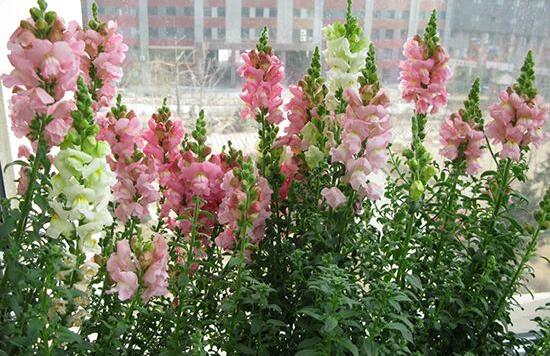Propagation method of potted lotus, sowing and reproduction is the easiest / learn 5 ways to make your house full of flowers
First, the propagation method of lotus is the simplest to sow.

Lotus is a kind of flower with strong vitality. There are many ways to reproduce lotus, such as sowing, dividing plants, dividing lotus roots and so on. No matter which method it is, what we need to pay attention to is the breeding temperature. The temperature of cultivating lotus is the most important. If it is too cold or too hot, it is not easy to blossom. Let's explain these breeding methods one by one.
2. Sowing and propagation
Seed propagation is the most commonly used method in family planting lotus, the specific method is relatively simple, as long as the open seeds are soaked in water, often change water, they can germinate in a week or so, and rooting in two weeks can be transplanted. When transplanting, pay attention to the shallow water layer, lotus leaves should be exposed to the outside, a little maintenance, the same year can blossom!
After budding, put it in the basin and place it in the sunny place to strengthen the light and not lack of water. Put a small amount of rooting powder in the water to promote the growth of young roots. After 2 weeks, fine roots and 2-3 small lotus leaves can be planted separately. Generally, seedlings can blossom in two years.
3. Ramet propagation
After dormant and overwintering in the pond, the lotus root can be dug up and planted when the temperature rises steadily in spring. Early, low temperature, seed lotus root easy to freeze rot, too late terminal bud has germinated, easy to break money leaves, affecting survival. The lotus root selected in cylinder and pot culture must have intact terminal buds, otherwise it is not easy to survive, split propagation is one of the lotus propagation methods.
Before and after Ching Ming Festival, select the strong lotus rhizome, cut every 2 to 3 nodes into a section of lotus root, each section must have a terminal bud and retain the tail node, otherwise the water into the lotus root will cause the seed lotus root to rot. Protect the top bud with your fingers and insert it into the soil of the tank and pond at an angle of 20-30 degrees. If it cannot be planted in time, the lotus root should be placed in the leeward and shady place and covered with straw to keep it moist.
Fourth, split lotus root propagation
The propagation of lotus root is usually carried out from mid-March to mid-April. Early planting will affect the cold current, and the lotus root is vulnerable to freezing injury. In the north, transparent agricultural film can be used to cover the cold current. Before planting, the basin mud should be mixed into a paste. When planting, the top of the lotus root is inserted at an oblique angle of 20 degrees along the edge of the basin, and the bowl lotus is about 5 cm deep.
The large lotus is about 10 cm deep, the head is low and the tail is high, and the tail is half warped up to keep the end of the lotus root from entering water. After planting, put the pot in the sun to make the surface soil crack, so that the lotus root is completely bonded with the soil, then add a small amount of water, wait for the bud to grow, gradually deepen the water level, and finally maintain the water layer of 3-5 cm. In the early stage of pond planting, the water layer is the same as the basin lotus, and in the later stage, the lotus leaves are not submerged.
5. Propagation of lotus root
Lotus root, that is, the apical buds of the main lotus root, seed lotus root and sun lotus root, are all dynamic meristems, which are surrounded by thick scales, and the internal tissues are covered with layers of young leaves, terminal buds, axillary buds and flower bud organs. Cutting the terminal bud to raise seedlings is a technology to breed a new generation by using the continuous growth of the terminal bud. Usually when the temperature rises to 15 ℃ in spring, the buds begin to sprout. The propagation of lotus with terminal bud is the most suitable for the production of vegetable lotus root, which can not only save a large amount of lotus root, facilitate transportation, but also reduce diseases, which is worth popularizing.
6. Propagation of lotus root
The propagation of lotus rhizome is usually carried out in the growing season when the lotus whip elongates and many standing leaves grow on the whip node. Planting in the pond can follow the direction of the lotus root in the pond, touch to the bud, leave 2 leaves to break the lotus root and take it out, and transport it to the pond that needs to be planted or immediately planted in this pond. Pot-planted lotus can be planted in June-August when the new lotus root is initially formed, turn the pot to take the lotus root whip, new lotus root, and retain a few lotus leaves, change the pot and transplant to promote the re-flowering. The propagation of lotus root rhizome must be based on local materials and planted in situ to protect the terminal buds and standing leaves from being damaged. The above is the breeding method of potted lotus. I hope it can help you.
Propagation methods of water lilies
Water lilies are ornamental plants with beautiful flowers and leaves. Ancient Greece and Rome were originally worshipped as goddesses. Italian parks in the 16th century were mostly used to decorate fountain pools or decorate the exterior of halls. Today, we will introduce the breeding methods of water lilies.
Breeding methods of water lilies:
Ramet propagation
Water lilies are mainly propagated by ramets. Cold-tolerant species usually split from March to April before germination in early spring, and cold-tolerant species have high requirements for air temperature and water temperature, so they can not be divided until around the middle of May. When ramet, first dig out the rhizome, select the rhizome with full new buds, cut into 8~10cm-long root segments, each segment with at least one bud, and then plant. The terminal bud is buried upward in the topsoil, and the depth of the covered soil is that the bud eye of the plant is flat with the soil surface, and each pot is planted in 5-7 segments. After planting, a little sun, can be injected into shallow water, in order to maintain the temperature of the water, but irrigation should not be too deep, otherwise it will affect germination. The water level will be deepened when the temperature rises and new buds sprout. Put it in a well-ventilated and sunny place for maintenance, the cultivation water depth is 20~40cm, the summer water level can be properly deepened, and attention should be paid to keeping the basin water clean in high temperature season. In a small number of potted plants, the water lilies that have been planted for 2-5 years can be poured out of the pot, cut into 2-4 pieces, and then planted in the pot.
Sowing and reproduction
Water lilies can also be sowed and propagated, that is, they are transferred to water after blooming, and before the fruit is ripe, the flowers are wrapped in gauze bags so that the seeds fall into the bag after the fruit is broken. After harvesting, the seeds must still be stored in water, such as dry storage will lose the ability to germinate. Sowing in March-April, the basin soil should not be too full with fertile clayey loam, it is appropriate to leave the basin mouth 5~6cm, sow the seeds and cover the soil 1cm, press and soak into the water, the water surface is higher than the basin soil 3~4cm, cover the basin soil with glass, put it in the sunny warm place, in order to increase the temperature in the basin. The suitable sowing temperature is 25: 30 ℃. After about half a month, it can blossom in the second year.
This is the end of the breeding method of water lilies. Water lilies are among the most valuable aquatic flowers. The appearance is similar to that of the lotus, except that the leaves and flowers of the lotus protrude to the surface, while the leaves and flowers of the water lily float on the surface. Water lilies are known as "sleeping beauties in flowers" because they roll day and night.
The method of cultivating potted water lilies
Water lilies are loved by many people who raise water lilies because of their fragrance. Of course, it is necessary to master the culture methods of water lilies. The culture methods of water lilies include many aspects. We need to have a comprehensive understanding of the culture methods of water lilies in order to raise water lilies well. Here's how to raise water lilies.
The method of cultivating potted water lilies
Morphology and habits of water lilies
Water lilies are ornamental plants, and there are other aliases such as floating lotus, meridian lotus and so on. Originated in Mexico and eastern Asia, widely distributed in Northeast China, North China, Southwest China, South China, Japan, Korea and Siberia. Like strong light, strong cold resistance, suitable for a well-ventilated environment. It is required to be cultivated in humus clay, lake or pond.
A water lily can bloom for 3-4 days. It blooms every afternoon and closes at night. Can be used as a garden or potted water lilies, water greening or ornamental. Its rhizome can be used for food seal or wine making, can be used as medicine, has the function of clearing the lungs and converging, and can treat pulmonary tuberculosis, hemoptysis and other diseases.
Water lilies are characteristic aquatic flowers and perennial aquatic herbs. Rhizome short, thick and erect, unbranched. Leaves entire, round or heart-shaped, petiole slender, floating surface, dark green light on the surface, dark purple on the back. The flower is solitary on the top of the slender pedicel, floating on the water surface, showing white, yellow, pink and other colors; there are many flowers arranged in several layers; the stamens are numerous and golden; the ovary is inferior and the stigmas are arranged radially. The flowering period is from May to October and the fruiting period is from August to October. The berries are spongy and the seeds are oval with fleshy cystic aril.
Potted water lilies
Water lilies are strongly positive flowers and are not tolerant to shade. It is suitable to grow in the mud of Fei Wo River and can survive the winter in the place where the soil is not frozen in the water. I like to be fat. The lotus can be forced to fertilize according to the method of fertilization. It is appropriate to plant at a water depth of 20ml / 60cm. Potted plants can use pots with a diameter of 30-40 cm, choose sticky river mud, and use hoof horn and bone powder as base fertilizer. Plant people in the depth of the soil, to not see the rhizome prevail, keep the mud surface with water 4mur5cm deep, wait for the leaves to grow out, gradually deepen the water level.
There are fewer diseases and insect pests in potted water lily cultivation, so it is necessary to change the soil and replant after 4 years of cultivation: water lily irrigation and fertilization water lily is a fertilizer-loving flower. If there is a lack of fertilizer, the leaves become smaller and the buds stop growing. Therefore, before planting, base fertilizer should be applied, mainly horseshoe slices and rotten cake fertilizer. The water level during the growing period should not be too deep, otherwise the growth will be affected, the leaves will turn yellow, and topdressing will be applied once during the growing period. The method of fertilization is to mix the cake fertilizer with the river mud to make a mud block, and then put the mud containing cake fertilizer evenly into the water lily pond. The ramet propagation of water lilies can be carried out from March to April in spring. First dig out the exuberant underground stem from the pond mud, select the section full of new buds, cut it into 6mur10cm-long segments, and then plant it flat in the mud, not too deep: usually keep the new buds on the underground stem flat with the soil, and the underground stem after planting, bask in the sun a little before releasing water. At the beginning, the water should be shallow rather than deep, and then deepen the water level when the temperature rises and new buds begin to sprout. At this time, the water in the pool should not flow too fast, and the deepest water level should be 20Me 30cm. Because the petiole of the water lily is thin and weak, the water level is too deep, and the new buds cannot be drawn out. If you want to plant in a deep pond with a water depth of more than 40 cm, you can build a platform or cushion a basin in the pond.
Put potted water lilies on the stage or pot. The sowing and reproduction of water lilies can be carried out from March to April, and the seeds are taken out of the water for pot sowing. After sowing, the pot is soaked in water. The water surface can be slightly higher than the basin soil. After emergence of leaves, the depth of water gradually increases with the growth of stems and leaves. The suitable sowing temperature is 25 ℃ and 30 min. It can germinate in half a month and blossom in the second year. The seeds should be stored in water.
Once the seed is dry, it loses its germinating power. When planting yellow water lilies in the family jar, there will be a large number of wigglers in the tank, making the water in the tank become turbid, affecting the viewing of yellow water lilies, how to prevent and cure it? The easiest way is to put more than a dozen wicker fish in the tank. When the plum rain season comes, it is easier to breed a large number of wicker fish in the tank, so putting wicker fish will have an immediate effect. Within a few days, none of them was seen, the water was crystal clear, and the small wicker fish joined each other from head to tail, chasing and swimming in the water lilies, adding to the ornamental value of water lilies. Wicker fish, commonly known as string fish, most like to eat mosquito larvae, and it is easy to feed. In addition to eating mosquitoes, they also like to eat flies. When you go fishing in the countryside, it is easy to take the bait with flies. Therefore, in the courtyard, such as planting lotus and water lilies, and stocking a few tails, there is no need to worry about the wiggling in the jar.
Family pot planting water lilies, it is best to renew the ramets every spring to ensure that it has a stronger growth. In the case of not changing pots, continuous cultivation of water lilies should not exceed 2 years.
- Prev

Propagation method of potted sweet-scented osmanthus, cuttings rooting and transplanting into flowerpots (the simplest propagation method)
With the progress of pot technology, sweet-scented osmanthus can also be raised at home. Earlier we talked about how to raise sweet-scented osmanthus and the efficacy and function of sweet-scented osmanthus. Now let's take a look at the propagation methods of potted sweet-scented osmanthus. There are many propagation methods of sweet-scented osmanthus, such as cutting, grafting, sowing and so on. The simplest method is cutting propagation.
- Next

How to propagate goldfish grass? the method of cutting propagation of goldfish grass is illustrated / it can be propagated in all four seasons.
The beauty of goldfish grass, friends who have seen it all know, its flowers are like goldfish, floating in the wind, looking very beautiful. In addition to ornamental, goldfish grass has many effects and functions, medicinal can be said to cure all diseases. With such flowers, there are naturally many people who raise them, and the breeding methods are gradually improved. It is understood that
Related
- Fuxing push coffee new agricultural production and marketing class: lack of small-scale processing plants
- Jujube rice field leisure farm deep ploughing Yilan for five years to create a space for organic food and play
- Nongyu Farm-A trial of organic papaya for brave women with advanced technology
- Four points for attention in the prevention and control of diseases and insect pests of edible fungi
- How to add nutrient solution to Edible Fungi
- Is there any good way to control edible fungus mites?
- Open Inoculation Technology of Edible Fungi
- Is there any clever way to use fertilizer for edible fungus in winter?
- What agents are used to kill the pathogens of edible fungi in the mushroom shed?
- Rapid drying of Edible Fungi

